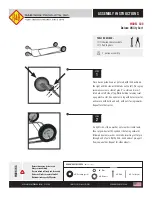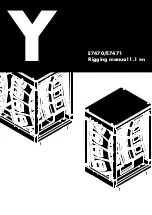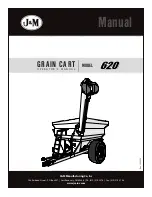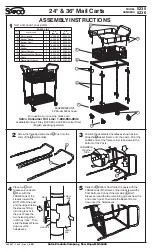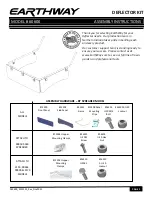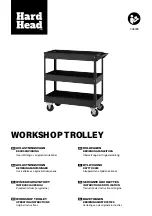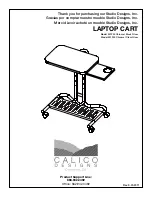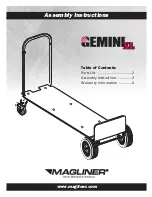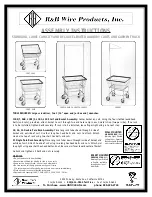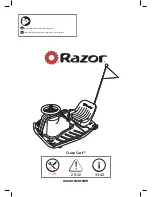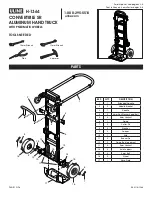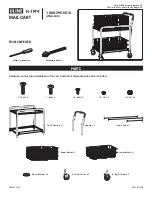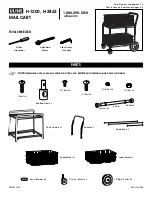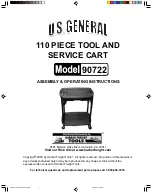
Experiments
Plunger Cart
012-14781A
17
Experiment 5: Rackets, Bats, and "Sweet Spots"
Purpose
When a batter or tennis player strikes a ball, a portion of the rotational kinetic energy of the bat or
racket is transferred to the ball. In a somewhat oversimplified picture, the motion of the bat or racket
can be thought of as a simple rotation about a pivot which is located near its end and close to the
batter’s wrists. The portion of the bat’s original kinetic energy that is transferred to the ball depends
on the distance y between the point of impact and the pivot point. The position on the bat
corresponding to the maximum energy transfer is called a “sweetspot”. We will call this maximum
energy sweetspot SS1.
NOTE: For simplicity, it is assumed that the collisions are perfectly elastic.
Theory
As any batter can tell you,
if you hit the ball at a cer
-
tain point on the bat, there
will be no shock, or
impulse, transferred to
your hands! This
“sweetspot” is generally
located at a different posi
-
tion than SS1 and is called
the “percussion point”. We
will call this zero impulse
sweetspot SS2. For a
given “bat” and pivot, the
position of SS2 can be
found from:
where I is the rotational inertia of the bat for the corresponding pivot, m is the total mass of the bat,
and y
cm
is the distance from the pivot to the center of mass of the bat. (e.g. If a uniform rod of length
L is pivoted about an endpoint, SS2 is located at 0.67L from the pivot.)
The positions of both SS1 and SS2 can be found theoretically, or by using the Sweet Spot computer
program (see page 20 for details). The position of SS2 can be found experimentally using the
PASCO Force Sensor or, roughly, by actually hitting a ball at a variety of positions on the bat and
noting where the least shock to your wrists occurs. In this experiment, a method for determining
the location of SS1 is described.
If you have already done the experiment to determine the coefficient of rolling friction for your cart
for the same surface that you are using in this experiment, you can determine the kinetic energy of
the cart at the moment after impact as shown in Eqn. 2.
Equipment Needed
Plunger Cart
Metric Measuring Tape
Meter Stick or Long Rod Mass Set
y
x
Figure 5.1
Pivot Point
Eqn. 1
SS2
cm
I
y
my























